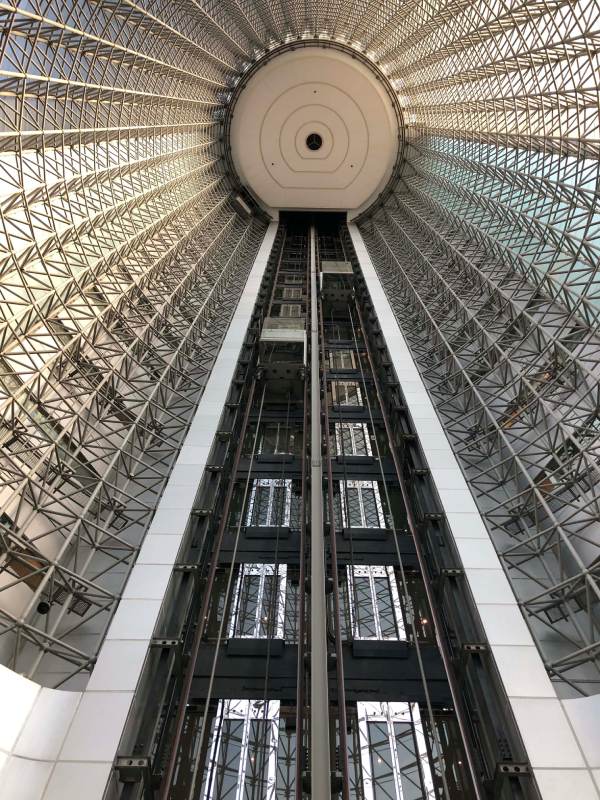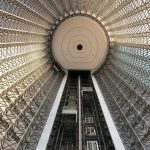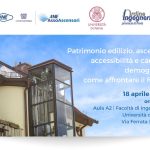The lift in its ‘habitat’: an ideal story
By Giuseppe Volpe
Article published in Elevatori Magazine 2/2024
Dear readers, a detailed in-depth study on the lift begins in these pages and will continue in the next issues of Elevatori Magazine, highlighting all its centrality within the building and showing the increasingly pressing need to include an expert in this means of transport from the earliest stages of building design.
I am thinking of a free and independent professionalism that can be consulted by those who are about to design a building without adding further bureaucracy.
This in-depth article, which I strongly desired, will be edited by the editorial team and will give space to many voices of professionals who, in different ways, are involved in the life of the building and vertical transport within it (starting with the members of the Technical Committee of Elevatori Magazine and then expanding to many other figures).
My decision to propose the figure of a vertical transport expert among the professionals responsible for a building project, right from the early stages, stems from several considerations. The first relates to the speed of the innovations that are affecting our sector: the inclusion of a professional who is always up-to-date on the subject of lifts, who continuously investigates the many technological innovations in the sector, makes it possible to identify from the outset the lifts best suited to the needs of the building being designed. In fact, the staff (architects, engineers, etc.) who start the design of a building have the normal knowledge of installations, including the lift, but do not have the in-depth knowledge associated with today’s rapid developments.

The knowledge they have, therefore, is no longer sufficient to achieve the best possible result. Therefore, the need arises for more specialised and up-to-date professionalism, which the staff initiating the design of a property can freely consult in order to propose a lift that is as modern and high-performance as possible in relation to the needs of the property being designed. Perhaps this professionalism can already be found in existing institutions. Abroad this figure already exists, it is the Vertical Consultant, but in countries like Italy it is little widespread: this gap must be filled as soon as possible.
Another consideration relates to the fact that the presence of ʻlift experts’ right from the embryonic design phase of the building becomes essential following
the form that legislation has taken and that lift standardisation is taking, as will be seen in detail within the article. One consideration, then, stems from an undeniable fact: the lift is a machine that constantly transports people without anyone driving it. This fact, in itself, should make it clear that this means of transport must be given the utmost attention, because it concerns the safety of the people using it, comfort during travel, and ease of use. And last but not least, let us remember the lift’s role in breaking down architectural barriers.
Hence the fact that in its design, due consideration must be given to all the special needs of those who experience a limitation of motor and/or sensory capabilities, whether temporary or permanent. These are not ‘nuances’, but very important issues in a world that increasingly speaks of inclusiveness, accessibility, design for all. If we want these to remain not just words but tangible facts, clearly expressed in the building itself, then the advice of an expert in vertical transport cannot be ignored.
In this deepening, we have questioned many experts (designers, engineers, architects, builders, university lecturers, administrators representing end users and facility managers) each of whom will give their own contribution in constructing the ʻideal lift story’ that you will be able to read in the next issues of Elevatori Magazine.
I am sure that everyone will be able to find interesting ideas for their daily work and that it will also be useful to ordinary users, who will be able to learn something more about this much-used medium.
In the box below, we had fun imagining that we could interview a lift as if it were a flesh-and-blood person, to get to know it and to bring a smile to our readers’ faces.
THE IMPOSSIBLE INTERVIEW
By Maria Volpe
Dear friends, for you I have interviewed an unusual character, left on the sidelines for a long time and perhaps a little shy because of this. It was not easy to snatch an interview from him, not least because I had to follow him up and down all his routes. However, I did it! It’s the Lift. We all know who he is, but few really know him and his past is not well known to the general public. Yet, who among us does not know the history of the automobile, or the inventor of the light bulb, the gramophone or the telephone? Do you think that in today’s world, with technological progress advancing ever further, the use of the lift is of secondary importance? Maybe in the past it could have been, but certainly not today: with 100-floor buildings, I challenge you to walk up 1634 steps 4 or 5 times a day!
Mr Lift, could you tell us about your origins?
I don’t remember the date of my birth precisely, but if you like I can start by telling you about my direct ancestors and then come down to me. Just think that already in the 3rd millennium B.C., between about 2700 and 2400, the Egyptians used inclined planes to lift the stone blocks for the construction of the pyramids.
But from Egypt we move on to Greece where we find the very likeable Archimedes (no, not really Mickey Mouse’s inventor friend), who in the 3rd century BC created the worm screw that is still the fundamental element of traction machinery for lifts today. And from Greece I now take you to Rome, to the time of the shining Roman Empire. Think that the gladiators and the animals destined to fight in the Colosseum were lifted up to the arena floor by large platforms; and archaeological studies prove that Nero’s palace contained some of my ancient relatives, yes, I mean… some lifts.
Mr Lift, excuse me for interrupting you, but would you call all these ancestors of yours by the name of lift or just simple rudiments for lifting things or people?
Honestly, I don’t think they deserved my name at all, but it’s a long way to go and they went to a lot of trouble to get there. In fact, where I left off with my story, ah back to the time of the Romans. Moving on to the Middle Ages, it is to this period that devices used to lift men and goods are traced, especially for hermitages and convents perched on impervious peaks. The oldest of these lifts still in existence appears to be that of the Abbey of Mont St. Michel in France, installed in 1203.
Here, this I can perhaps say is the first ancestor of us lifts. But quickly I want to continue with my story and how can I leave out the great godfather of science?
I am talking about Leonardo Da Vinci, who left us a very important drawing of a system for lifting buckets of water, which is interesting because it shows how
Leonardo had perfectly identified the fundamental mechanical problems of us lifts.
You know, I have heard of certain special chairs (called ‘flying chairs’) for transporting people. Perhaps you have heard of these relatives of yours?
Yes, they are my cousins, and about them I want to tell you a funny story that happened at the court of Napoleon. A certain De Villayer, posing as a great inventor, made the famous ‘flying chair’. He managed to sell a lot of them, until the day when the rope of his chair broke, sending an illustrious personage of the court sprawling: De Villayer ended up cleaning the shoes of the court butler. In short, if I was born many centuries B.C., the fear that many people have of me can probably be traced back to that event. And so, many people started to invent technologies that would increase the safety of my passengers. If I am not mistaken, it must have been the American mechanic Otis who, in 1853 in New York, presented a safety device capable of blocking the car platform in the event of a break in the load-bearing rope: this device is conceptually still valid today and is known as the ‘Parachute’. And since then, once fears were allayed, we became more popular and, both in America and Europe, major lift factories quickly sprang up.
By now you Lifts are practically perfect and getting better and better. So, I ask you this: what is the lift like today?
It’s like me! Aesthetically beautiful, fast enough, not too expensive, with exceptional safety devices, full of writings to read (so as to avoid embarrassment when several people meet here and don’t know what to say), with a nice mirror (so as to be able to finish getting dressed in the morning when you are late) and with
more and more modern and networked technological devices, to further improve our maintenance in order to also give new services to passengers.
Where can we find out more about you?
Simple, you can find me where it’s all about us lifts… in Elevatori Magazine!








